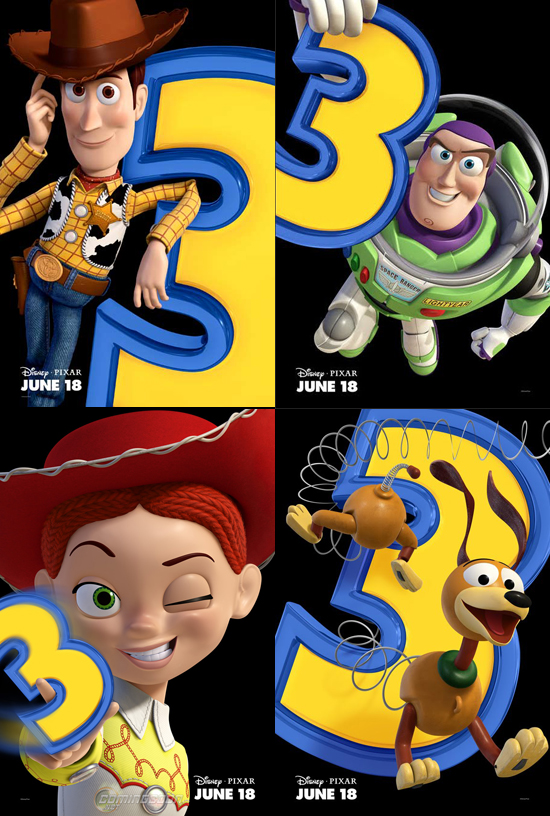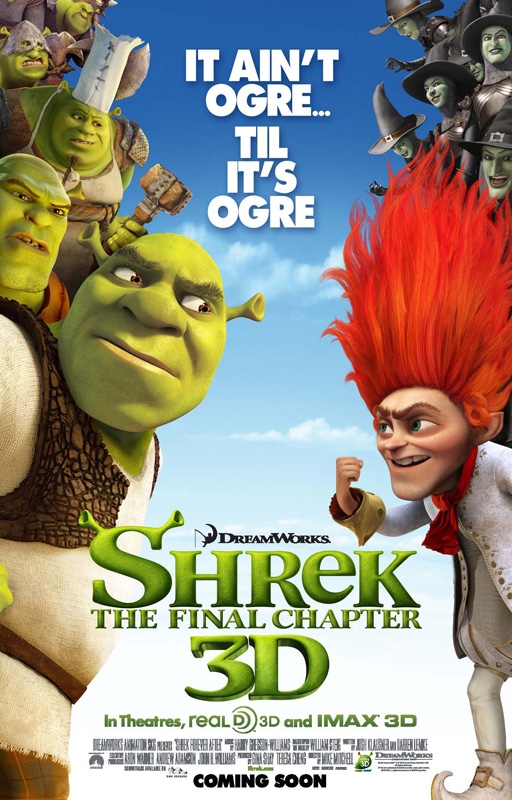In the July 2010 issue of Vanity Fair Jeff Wolcott wrote a piece entitled “Cinema Purgatorio” about the nationwide trend of film critics being fired or as the article's subtitle puts it: “A threatened species, film critics have been bemoaning lost jobs and vanishing outlets. Andrew O'Hehir's Salon smackdown of his colleagues fuels a debate over whether professional movie reviewing should exist at all.”
Small papers across the country have been letting go of their film writers, but even the veterans at some of the nation's heavy hitters are no longer safe. Andrew Sarris of The New York Observer, Todd McCarthy of Variety, David Ansen at Newsweek and Mike Clark of USA Today have all been — as the English would say — made redundant. On TV, “At the Movies,” the industry changing program created by Gene Siskel and Roger Ebert, will be canceled as of Aug. 14.
So, are film critics no longer wanted or needed? Or is it just a sign of the recession? In a bid to trim budgets, are newspapers and magazines, much like schools, cutting the arts first?
Toby Young wrote in “How to Lose Friends and Alienate People,” his memoir about his disastrous tenure at Vanity Fair, that it is glossy magazines like Vanity Fair that say what's in and what's out. It isn't so much that they set the trends, but by spotlighting things they make them events. As Young puts it: “If Keith Richards falls over in a pub and there are no journalists around to witness it, did it really happen?”
Young was writing about the power of Vanity Fair in the economically booming mid-1990s, now is a very a different time and the journalism world is taking just as much of a hit by the recession as other industries.
But if Young's theory that "the New York glossy posse are the Sybils everyone listens to,” still remains true then the fact that Vanity Fair is addressing this trend is a big deal. The journalist did in fact see Keith Richards fall off his stool.
Here though we have an interesting case of journalists covering other journalists. The critics have turned onto each other. Wolcott's piece is heavy on quotes from other critics, who are in turn often commenting on other writers. So, now I'm going to add to this on-going cycle of commentary. After all, that's what the world of criticism should be: an on-going discourse. When I or anyone else writes a review it isn't the be-all-end-all but one more voice in the greater discussion. There is a give and take not just with the art itself, but with other critics and the readership as well.
Which is what is so distressing about the reaction of many of the critics cited in Wolcott's article, particularly Salon's O'Hehir who bluntly told his colleagues to “shut up” and stop whining about the loss of their jobs. He may have a point, but there's a kinder way to tell people to pull themselves up and move on.
Time magazine's Richard Schickel outdoes O'Henir in terms of spewing bile. On a panel discussing Boston Phoenix columnist Gerald Peary’s documentary, “For the Love of Movies,” which looks at the craft of film criticism, Schickel said: “Watching all these kind of earnest people discussing the art or whatever the hell it is of criticism, all that, it just made me so sad. You mean they have nothing else to do? I don’t know honestly the function of reviewing anything.” Harsh words coming from someone who is paid to give his opinion about movies.
The reason so many people choose to write about film, or any art for that matter, is right in the title of Peary's film: it is out of love. When someone becomes a critic, for the right reasons, it is not about tearing down other people's art, but rather sharing the joy of discovering a piece of good or great art. If their criticisms of work they deem unworthy are at times harsh it is because they are let down that the piece didn't meet its potential. Writers like A.O. Scott, of the New York Times, and Michael Philips, of the Chicago Tribune, have this mentality. In their writing and as the hosts of “At the Movies” for its remaining months you can see their genuine passion and love for cinema.
Of course, there's always that on-going debate that critics are out of touch with the tastes of the general audience. The accusation is that critics always heap high praise on films with a narrow audience and slam films with broad appeal. While critics do often champion high brow films, they also praise quality mainstream films. Their standards just tend to be a bit higher, simply from having seen so many more films than the average filmgoer.
At the end of the day, this is all opinion. A critic's opinion is no better or worse than the average viewer's, it is merely a more educated one. The more you read a particular critic the more weight you give their opinion. You may not necessarily agree with them all the time, but if you're a loyal reader than you'll know where your tastes differ, which goes back to the idea of criticism being a discussion. A critic is just a guide trying to point you to good films and away from bad films, especially since some people rarely make a trip to a movie theater. When you do go, a good critic wants to make sure you have a good time. That's their ultimate function.
As someone striving to be a film critic, I hope this isn't the death knell of a profession I adore. Twitter, blogging, YouTube, Facebook and other forms of social networking have given everyone a platform in which to share their opinion. Thanks to Twitter those opinions are instant and 140 characters long. Is this film criticism's Achilles' heel? A whole generation is growing up wanting everything short and instantaneous. It is a time of transition. The worlds of print, broadcast and online are mingling and combining and at this junction it is unclear what will come out in the end. Does the long form review have a place in this new world? I think so. I hope so.
 Each summer we get a barrage of new big budget entertainments, some are good, even great, and some are just plain awful. Throughout it all though, one name remains a consistent source of quality entertainment: Pixar. It started 15 years ago with “Toy Story” and now all our favorite characters are back for a third adventure together.
Each summer we get a barrage of new big budget entertainments, some are good, even great, and some are just plain awful. Throughout it all though, one name remains a consistent source of quality entertainment: Pixar. It started 15 years ago with “Toy Story” and now all our favorite characters are back for a third adventure together. In 1984, “The Karate Kid” was about a New Jersey kid moving to California and being beset by bullies until a kindly Japanese man trained him in karate. In the 2010 version we have a Detroit kid sent off to China, but bullying is clearly an international language. All jokes aside about how everything today is made in China, this is a surprisingly worthy remake.
In 1984, “The Karate Kid” was about a New Jersey kid moving to California and being beset by bullies until a kindly Japanese man trained him in karate. In the 2010 version we have a Detroit kid sent off to China, but bullying is clearly an international language. All jokes aside about how everything today is made in China, this is a surprisingly worthy remake. The other day, by means I cannot disclose, I got a hold of Devo's first new album in 20 years, “Something for Everybody,” two days early. I shared my enthusiasm with an acquaintance via instant messaging and got: "Who is Devo?" Inevitably, two words clued this person in:
The other day, by means I cannot disclose, I got a hold of Devo's first new album in 20 years, “Something for Everybody,” two days early. I shared my enthusiasm with an acquaintance via instant messaging and got: "Who is Devo?" Inevitably, two words clued this person in:  On paper, “Get Him to the Greek” sounds like a calculating money grab. The film takes a supporting character from the moderate hit “Forgetting Sarah Marshall” and spins him off into his own film. Hollywood loves a sequel, even just a sort of sequel, and name association matters more than quality, but low and behold the return of Aldous Snow is a hilariously worthy one.
On paper, “Get Him to the Greek” sounds like a calculating money grab. The film takes a supporting character from the moderate hit “Forgetting Sarah Marshall” and spins him off into his own film. Hollywood loves a sequel, even just a sort of sequel, and name association matters more than quality, but low and behold the return of Aldous Snow is a hilariously worthy one. Rebecca Howland, a 2002 graduate of Fryeburg Academy, is a sunny, outgoing person — not that you'd know this from her latest acting job in the film “Witch Way,” which is having its premiere Sunday, June 13, at 2 p.m. at the Red River Theater in Concord, N.H.
Rebecca Howland, a 2002 graduate of Fryeburg Academy, is a sunny, outgoing person — not that you'd know this from her latest acting job in the film “Witch Way,” which is having its premiere Sunday, June 13, at 2 p.m. at the Red River Theater in Concord, N.H. Nearly a decade has passed since the first “Shrek” came out. It became the first film to win an Academy Award in the newly formed Best Animated Feature category — and for good reason, too. It was sharp, uproariously funny, imaginative and even at times tender. Now we have “Shrek Forever After,” the fourth installment of the series, and franchise fatigue is settling in.
Nearly a decade has passed since the first “Shrek” came out. It became the first film to win an Academy Award in the newly formed Best Animated Feature category — and for good reason, too. It was sharp, uproariously funny, imaginative and even at times tender. Now we have “Shrek Forever After,” the fourth installment of the series, and franchise fatigue is settling in.